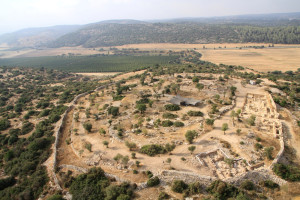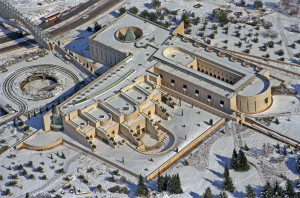
While many of my tourists are visiting Israel for their first time, I also get the privilege to guide some groups who have visited Israel many times before. This means that most of the sites that I commonly bring tourists to are not of interest to these groups since they have already visited there in the past. They often ask me to show them something new, or at least new for them. And I take this request seriously. Plus I enjoy the challenge!
I of course try to tailor every tour I guide to the individual desires of the specific tourists. But that customized approach still usually draws from a selection of prominent and important sites. So the bulk of my tours visit places that I guide at frequently.
This past week, however, I had the pleasure of guiding two small groups who had both been here many times. This gave me the opportunity to take them to some places I guide at less frequently, some of which I had been to but never had guided before. Here are few of those places…
Khirbet Qeiyafa
One couple I was with had a particular interest in recent archaeological discoveries connected with the Biblical Era. When they made this request, I knew that I just had to bring them to visit Khirbet Qeiyafa (aka the Elah Valley Fortress).
One of the most exciting archaeological sites in the past 10 years in Israel, Qeiyafa was excavated for 7 seasons between 2007 and 2013 by Prof. Yosef Garfinkel and Saar Ganor of Hebrew University and the Israel Antiquities Authority. They found a fortified city that they dated (via Carbon-14 tests on olive pits) to between 1050 and 971 BCE. The artifacts they found led them to suggest that this was a Judean city. Between these things, and the city’s location overlooking the Elah Valley site where the Bible says David defeated the Philistine Goliath, the archaeologists believe this to have been constructed by King David. (The two city gates they uncovered further led them to suggest it is the Shaarayim mentioned in the Biblical account of that battle, since Shaarayim means “two gates.”)
As with all archaeology in Israel, Garfinkel and Ganor’s claims are hotly debated, largely by those who come from the Biblical Minimalist camp — a group of archaeologists and scholars who claim that the Bible is largely mythological, and who suggest alternative datings and explanations for many archaeological sites. Thus, Qeiyafa is an excellent site to not just understand Garfinkel and Ganor’s position, but also to explore how the process of archaeology works, and to understand the issues that lie at the heart of all archaeology in this country.
Supreme Court

Firstly, the architecture of the magnificent building, inaugurated in 1992 and designed by Israeli brother-sister architects Ram Karmi and Ada Karmi-Melamede, is packed with symbolism. From the materials used, to the shapes of the building sections, and from the layout of the building in its surroundings to the architectural forbears the building segments recall, the disparate pieces work as a beautiful whole the invokes the ideas of justice and of Israeli and Jewish history.
But a visit to the Supreme Court also provides a wonderful opportunity to highlight Israel’s justice system. Exploring the unique aspects of Israel’s Supreme Court (such as its role as the High Court of Justice), as well as understanding the differences between Israel’s appeals process from America’s, highlights the value that Israel places on justice for the individual.
Zedekiah’s Cave
Though I had guided in Zedekiah’s Cave before, it is one of those sites that I hold in my back pocket for those times when I am in the Old City with people who have visited multiple times. Just outside of the Damascus Gate, cut into the bedrock, a small opening leads to a truly massive cave system that runs for hundreds of meters beneath the Old City itself. Originally used as a quarry, stones from here may have been used to build the Western Wall (though this is debated).
Most of the stories connected with Zedekiah’s Cave (alternatively called Solomon’s Quarry) are little more than legends. But they add to the magic of exploring a somewhat unknown cavern beneath the ancient city. And more than that, they also underscore the special aura that Jerusalem has always held in the minds of those who hold it dear.
Have you been here many times before? Let me take you somewhere you’ve never visited and show you something new! Contact me to make a request.
